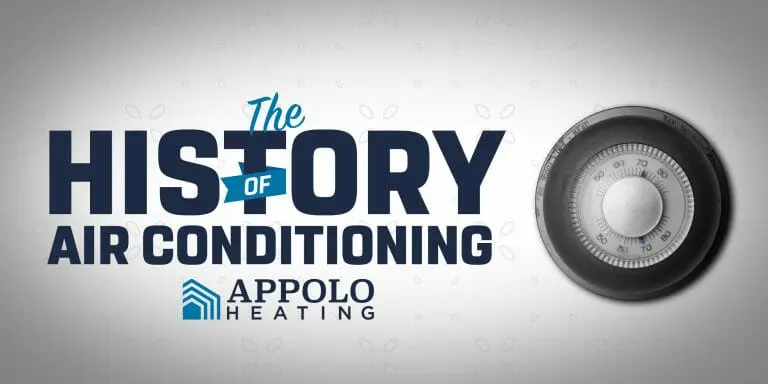
The History of Air Conditioning:
Staying Cool Before AC
Ever find yourself enjoying a refreshing blast of AC on a scorching summer day and wonder, “What did people do before this was invented?” You’re not alone.
Truth is, air conditioning hasn’t been common in homes for very long. Widespread use didn’t start until the late 1960s. That means for most of history, people relied on fans, shade, and hope to survive heatwaves.
So, how did we go from sweating it out to central air systems in nearly every home? Let’s take a look.
Early Cooling Attempts in History
Before electricity, staying cool took serious creativity.
In Ancient Rome, the wealthy piped cold water through walls to reduce indoor heat. One Roman emperor, Elagabalus, even imported a mountain of snow to his villa garden in an effort to stay cool. Not surprisingly, the snow melted almost immediately. It was an excessive and ineffective attempt to beat the heat.
After that, significant innovation in cooling disappeared for centuries. It didn’t return until electricity made new solutions possible.
The Birth of Modern Air Conditioning
In the early 1900s, Willis Carrier, an engineer, faced a problem. A publishing company in Brooklyn, NY needed a way to control humidity because it was causing printed pages to wrinkle.
Carrier solved the issue by using cooled coils to drop air temperature and reduce humidity. That innovation led to the first modern air conditioning system in 1902. It was the beginning of a new era in comfort and climate control.
When AC Became a Household Staple
By the 1920s, air conditioning appeared in public spaces like movie theaters and commercial buildings. These early systems were large, expensive, and not practical for home use.
That changed in 1947 when engineer Henry Galson developed a smaller, more affordable AC unit. That year, more than 43,000 units were sold, marking the beginning of residential air conditioning.
By the late 1960s, many homes were being built with central air systems, and window units were becoming more affordable and common. Today, nearly 100 million U.S. homes — about 87% of households — have air conditioning in some form, according to the U.S. Energy Information Administration.
What This Means for You
If you’re like most Americans, you already have air conditioning. But HVAC technology is constantly changing, and so are environmental regulations that affect how systems are built and installed.
That’s why you need an HVAC partner who understands modern systems and evolving standards. You need someone who helps you stay energy-efficient and up to date with current technologies.
Why Choose Appolo Heating?
At Appolo Heating, we’ve been in business for over 55 years. That means we’ve grown alongside the HVAC industry and understand how to balance innovation with reliability.
Whether you’re ready to install a new energy-efficient system or need routine maintenance, we have the expertise to get the job done right.
Our services include:
- New installations
- Preventative maintenance
- Indoor air quality solutions
- Heating and cooling repairs
We focus on efficiency, safety, and long-term value so that your system not only performs well but also saves you money in the long run.
Want to Learn More?
Now that you know how air conditioning evolved, check out the rest of our blog for more helpful HVAC tips and insights.
The more you understand your system, the more confident you’ll be in spotting problems early and knowing when to contact Appolo Heating for expert help.
Air conditioning was invented by Willis Carrier in 1902. He developed the first modern air conditioning system to control humidity for a printing company in Brooklyn, New York.
The first home air conditioner was installed in 1914 in a mansion in Minneapolis. It was a massive unit that took up an entire room!
In the 1920s, AC systems used toxic gases like ammonia or methyl chloride. They were primarily used in movie theaters and department stores to keep customers comfortable.
Before AC, people stayed cool using fans, shaded porches, high ceilings, and architectural designs that promoted airflow. Some homes even had “sleeping porches” to beat the heat at night.
Modern AC systems are quieter, safer, more energy-efficient, and environmentally friendly compared to early systems. They also use refrigerants like R-410A or newer alternatives, such as R-32 and R-454B, which have a lower environmental impact.
Absolutely. Air conditioning transformed how and where people live and work, especially in hot climates. It’s also essential for hospitals, server rooms, and manufacturing facilities.
